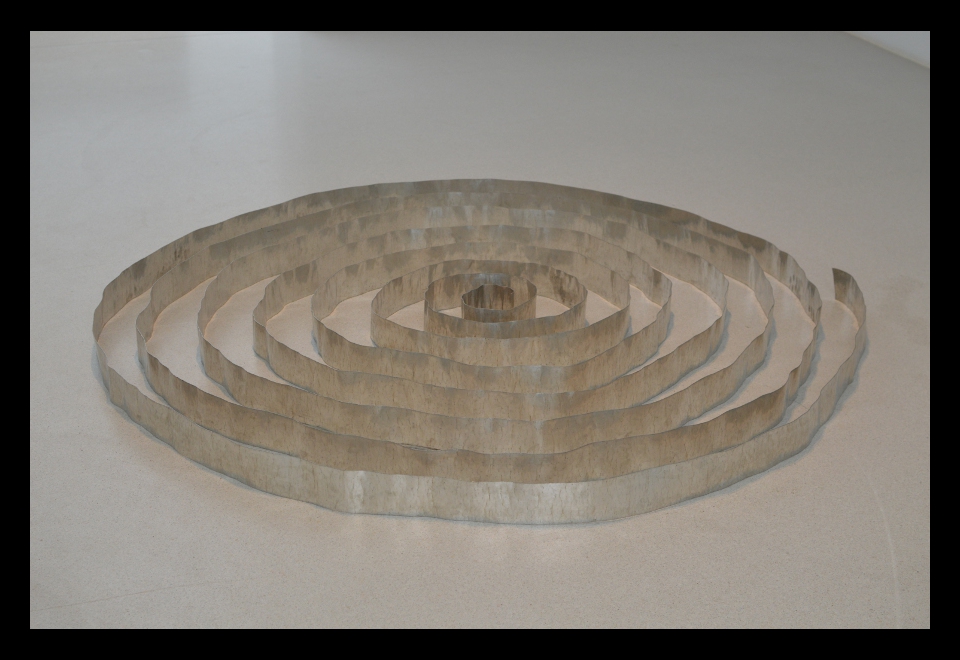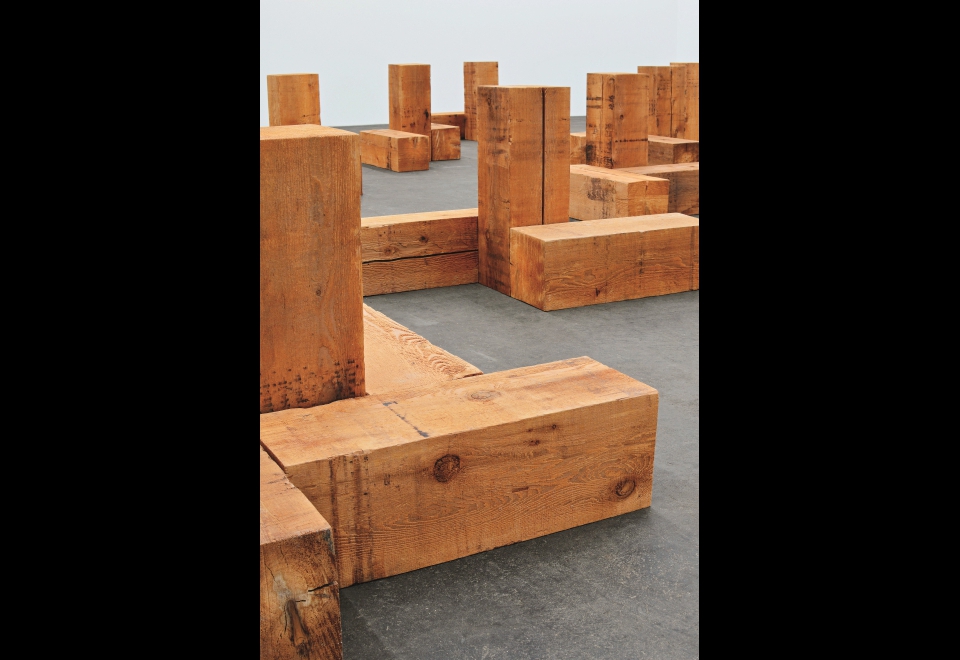 |
| Carl André, Tin Ribbon, 1969 (Proposition), 1997 (realization) |
How exciting that Paris has its very own Carl André retrospective this autumn. And even better that the exhibition is to be savored and treasured. Carl André: Sculpture as Place 1958-2010 will be known to New Yorkers who saw the same exhibition at Dia Beacon last year. Although inevitably there are some different works, and the layout is different.
 |
| Carl André, Sculpture as Place, 1958-2010 Installation View @ Dia Beacon |
As often happens with abstract art of American postwar artists, I was amazed at how exciting and sensuous the work is in the flesh as opposed to its austerity in photographs. I don’t know why this should surprise me because I went to the exhibition knowing that André’s minimalist works are all about the disruption to and reorganization of space in their midst. So of course there will be something very personal about being with them. They are also about challenging our bodies as we move through the space of the exhibition. The works block our paths, direct our movement, entice us to circumvent them, walk on them, touch them. So how could any of that be understood from a photograph? At the same time as the sculptures are textured and physically compelling, as is often the case, with André’s work there is very little to look at. The sculptures are not particularly aesthetically appealing or gorgeous, and often, there is nothing much to see. They work so powerfully at the level of physical engagement successfully eschewing all contemplation. All of which is to say, they have to be experienced in person.
 |
| Carl André, Uncarved Blocks, 1975 |
In a body of work that challenges the conception, process and experience of sculpture in mid-century USA, Carl André’s work is surprising for its humanism. The wood is beautiful, and there is always a warmth and tactility. In a work such as Uncarved, the split in the wood, the gap between blocks and the sensuous pleasure of the knots, fill them with life and meaning. In a further challenge to the notion of sculpture as an aesthetic object to be contemplated, the blocks in a piece like Uncarved can be pulled apart and put back together in different ways, like a puzzle with infinite solutions. Inspite of the resilience of the materials he uses, the works are transient, and embrace an ephemerality in their very composition, that reflects that of the visitor’s engagement with them. This is art to be walked on, around, over, looked down at, and navigated like a garden without paths.
 |
| Carl André, Lament for the Children, 1976 (destroyed), 1996 (remade) in Palacio Velazquz, Museo Nacional Centro de Arte Reina Sofia |
André’s sculpture is most often understood as minimalist because of its removal of all decoration from the artwork. It also erases all annexation, reduces, or elevates sculpture to the material it is made of and the experience that it makes possible. Minimalism comes at the time of social and political unrest in 1960s America. So with chaos all around him, the “minimal”-ness of the sculpture effectively counters the world outside it. For this reason, minimalism is often accused or critiqued of inward-looking self-referentiality.
But the challenge to counter the political climate of the late 60s/early 70s comes when these works as blocks, squares, shapes and tiles reveal over time that they are all about connection. Connection and community comes on so many different levels in these works. Each of the pieces is comprised of multiple blocks, it’s never just one. And as I say, in a work such as Uncarved Blocks, they all fit together like a jigsaw puzzle giving this notion of being meant for each other. In Redan, the combination of elements is what redefines the space and suggests our motion through it, creating new connections between us and the space.
 |
| Carl André, Sculpture as Place, 1958-2010 Installation View @ Dia Beacon Showing Breda, 1986 in foreground, Pyramus and Thisbe (1990) background left |
The most moving of the articulations of belonging together came towards the end of the exhibition in a work titled, Pyramus and Thisbe (1990). We will all remember the story of the lovers who were separated but able to communicate through a chink in the wall from Shakespeare’s comic rendition of their affair in A Midsummer Night’s Dream. Here, in André’s version of the lovers, the blocks of wood on either side of a wall are heart wrenching, it’s true. But it’s also a piece that becomes about the wall. The wall is what separates them, and the wall is what they draw attention to through their clinging to it. Just as it becomes personified in Shakespeare, so for André, the wall becomes a beating heart to join to otherwise separated lovers. And it’s all the more poignant here because Pyramus and Thisbe sits on either side of one wall of the room where Lament for the Children is laid out, a piece that suggests a graveyard filled with stones to mark the tombs of fallen children.
No comments:
Post a Comment